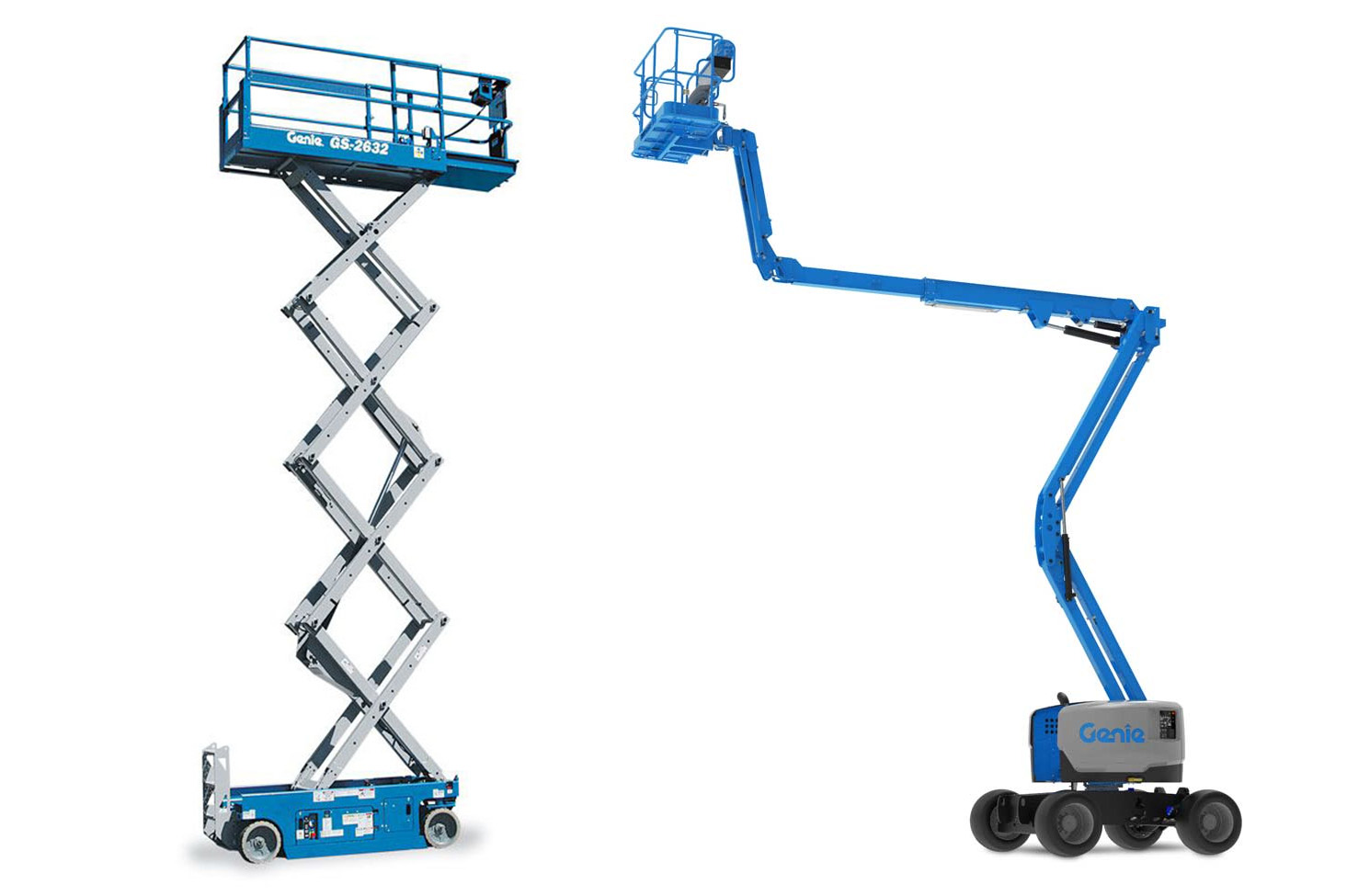
Boom Lifts? Scissor Lifts? How To Determine The Right Lift For Your Job
Lifts are designed to make work easier when working on a tall workplace or elevated work platforms. Contractors working on facility maintenance, construction or demolition projects need lifts for moving workers and equipment. Meaning: using a lift is more cost-effective, safer, and easier compared to building a ladder or a scaffolding. Some tasks that require a lift include repairing windows, roofing, cleaning windows on tall buildings, painting, installing commercial signage, or working on cell towers and electrical poles. There are different types of lifts designed for different jobs, such as boom lifts and scissor lifts.
So, which is the right lift for your job? Here is a guide to help you determine the right type of lift suitable for your specific project.
Types of Lifts
Scissor Lift
A scissor lift is a vertical lift with a wide platform that is the same size as its base. The lift can carry both workers and equipment in indoor and outdoor projects. Smaller scissor lifts are designed for indoor jobs and urban areas where space is limited.
Larger scissor lifts are perfect for outdoor settings where aerial work platforms are needed. The lift uses crisscrossing braces for lifting the platform up and down vertically. Many of our customers who prefer the scissor lifts are those that have overhead work on level surfaces. The lift is suitable for projects that involve multiple workers and heavier materials.
Boom Lifts
A boom lift is a very versatile type of lift with a work platform, a maneuverable arm, and a base. Boom lifts can be categorized based on power source, boom type, and bucket attachments. Boom lifts can be powered electrically, pulled by a truck, or battery-operated. Some aerial boom lifts are diesel-operated. Towable boom lifts, which are towed by trucks or vans, are ideal for projects that require a lot of movement.
Popular boom types come with vertical booms. The boom type you choose for your project depends on the amount of weight you want to lift and how high the boom lift can be angled or extended.
Most designs of boom lifts come with a workspace platform attached at its end. The type and size of the boom lift’s workspace depend on the amount of weight it can comfortably hold. Some common attachment options used on boom lifts include buckets, lumber forks and lifting hooks.
Electric boom lifts don’t emit fumes, and thus perfect for working in confined spaces. They are also considered to be more environmentally friendly than the diesel-operated boom lifts.
Articulating boom lifts have a double- or triple-jointed arm that is mounted on a sturdy base. This design allows the workspace to move side to side and can be swung over obstacles without needing to move the lift’s base. This flexibility makes the articulating boom lift more suitable for greater horizontal reach.
Telescoping boom lifts are commonly used in construction projects where there is limited access. We at Vandalia Rental carry Genie telescoping boom lifts that provide maximum reach by extending more than 100 feet. If you want a more sustainable alternative to a diesel-operated telescoping boom lift, consider choosing an electrically powered telescoping boom lift.
Looking For The Right Lift For Your Project?
Using a lift to make work easier is definitely a more practical option for executing a number of tasks. Renting a lift can make your project significantly safer and easier. Vandalia Rental offers a wide range of lifts designed for different uses and applications. For more information on how to choose the right lift for your job, contact us today.
